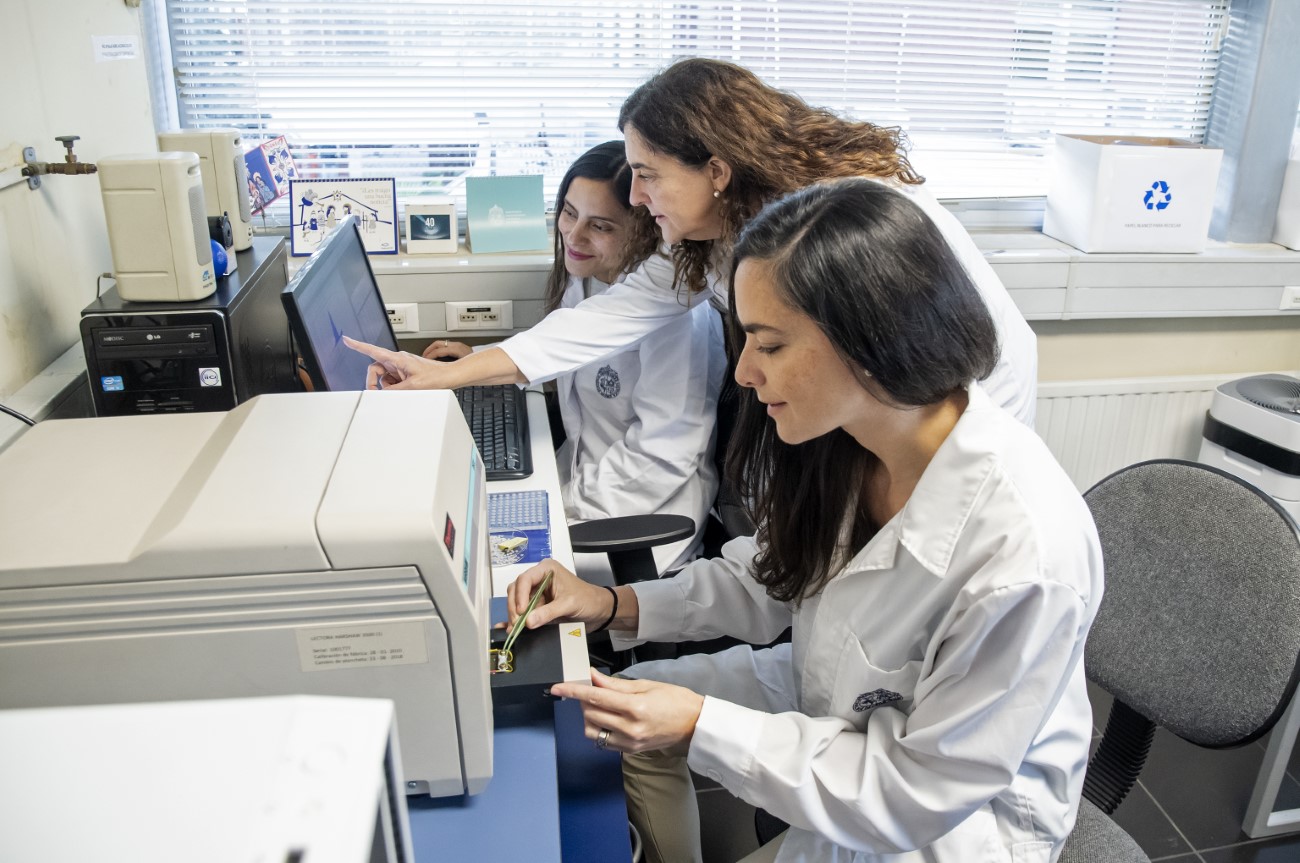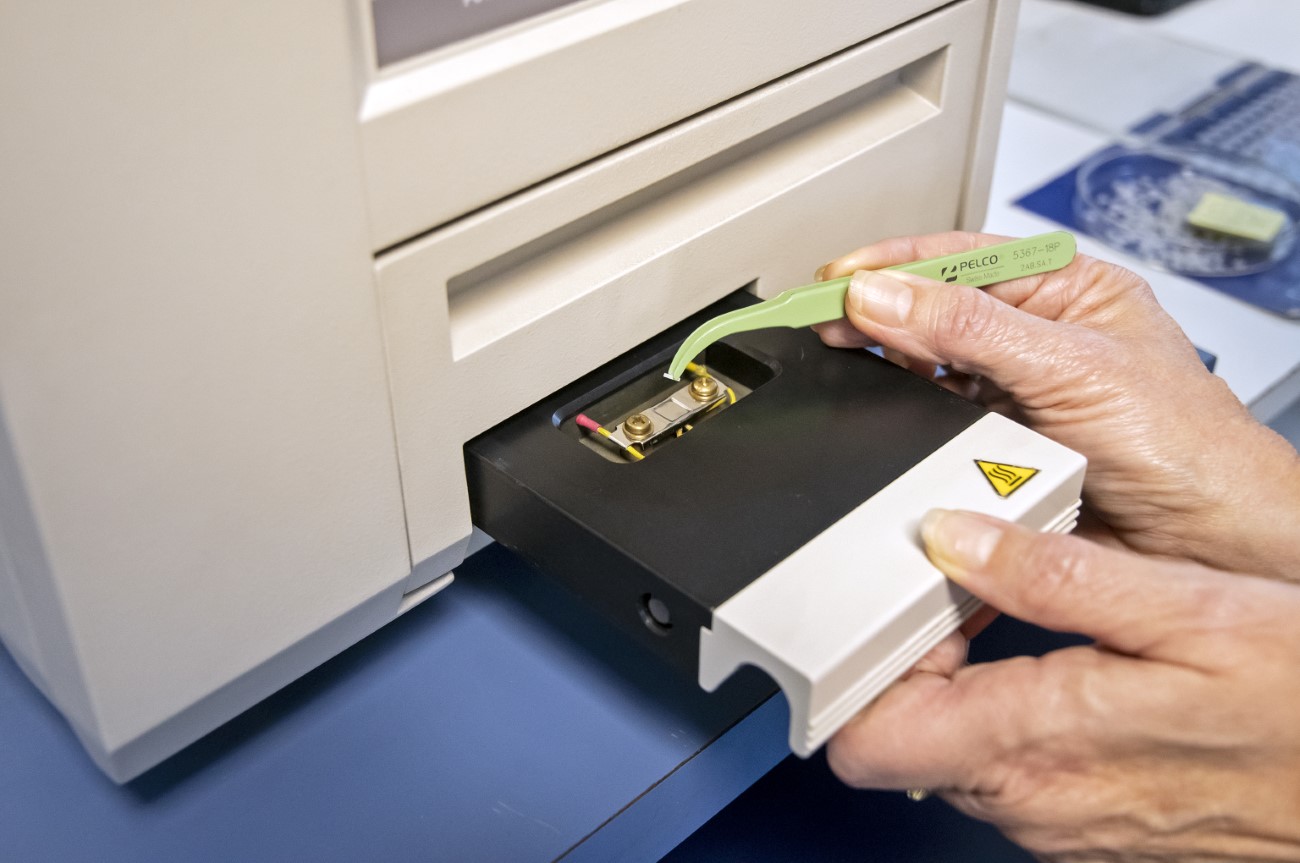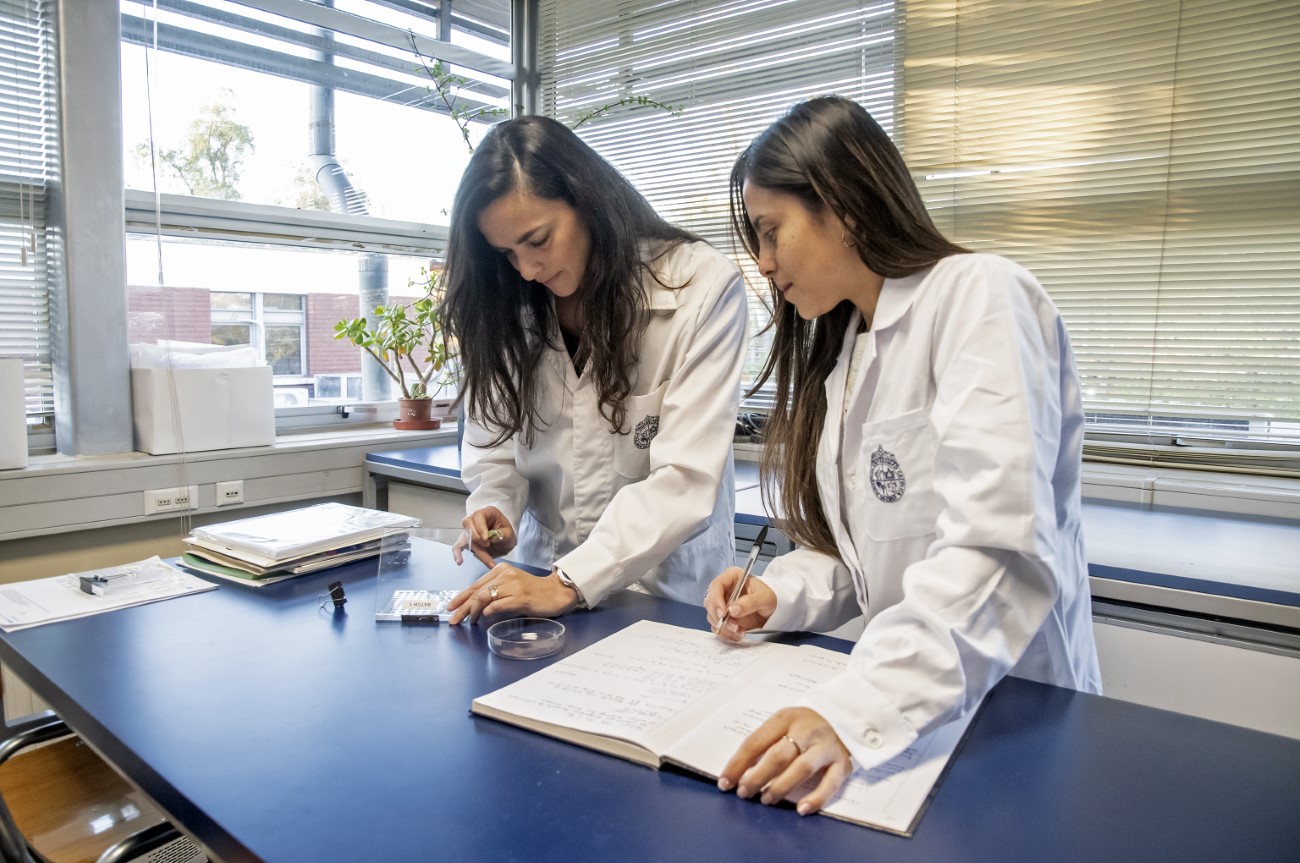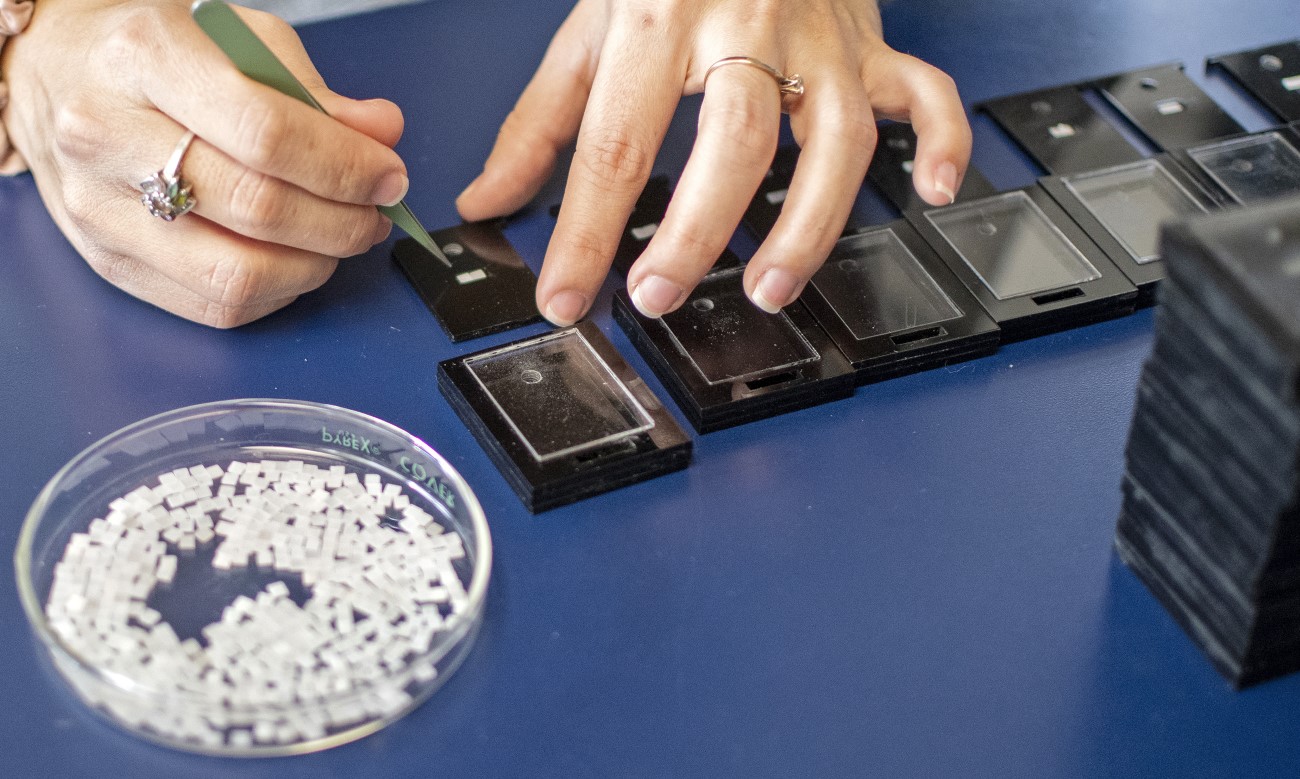Medical Physics
UC Dosimetry Laboratory
Medical Physics
UC Dosimetry Laboratory

Acquisition and analysis system
From this workstation, the operating parameters of the equipment (reader) for the acquisition of the thermoluminescent signal from the TLD crystals are defined, the corresponding brightness curve is displayed, and the absorbed dose in the detector is determined.

HARSHAW 3500 Reader
The positioning of a TLD crystal on the reader plate is shown. This system is compatible with thermoluminescent dosimeters in different forms, including powder, and allows the sample to be heated up to 600 C in a constant flow of nitrogen.

Crystal identification system
Each crystal has a different level of response to the same dose of ionizing radiation, which must be taken into account to reduce uncertainty in the dosimetric results.
Therefore, after characterizing the response of each crystal, a storage system is needed to keep them identified. The device used in our laboratory for this purpose is shown.

Setting up TLDs onto meter holders
The small size of the TLDs (3.2 x 3.2 x 0.89 mm) allows them to be incorporated in different phantoms for patient dose verification, as well as in personal or environmental monitoring systems. The image shows the insertion of crystals in a dosimeter for personal dosimetry.
Welcome to the UC Dosimetry Laboratory. We invite you to click on each of the highlighted points to learn more about our techniques and equipment.